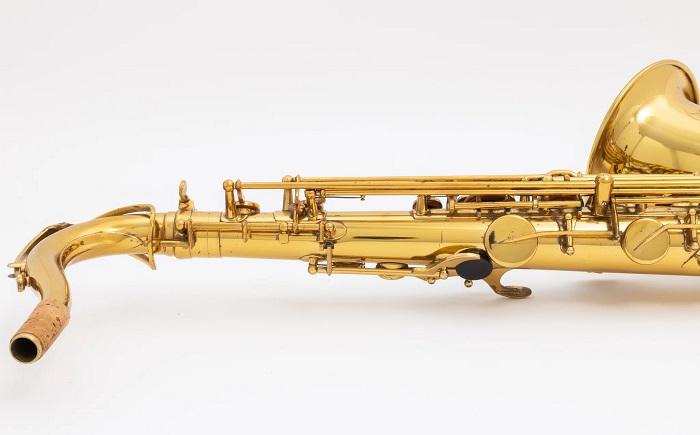How to Properly Hold and Position the Tenor Saxophone?

Playing the tenor saxophone requires more than musical talent. Proper holding and positioning are crucial for comfort, technique, and sound quality. Many beginners struggle with posture and hand placement, which can lead to strain and limit performance. This guide provides detailed instructions to help you hold and position the tenor saxophone correctly.
Understanding the Tenor Saxophone
Structure of the Instrument
The tenor saxophone is larger and heavier than the alto saxophone. It consists of the mouthpiece, neck, body, bell, and keys. Each component affects how the instrument balances and produces sound. Understanding these parts helps you support the instrument naturally, reducing tension in the hands, shoulders, and neck.
Weight and Balance
Because the tenor saxophone is substantial in size, improper holding can quickly cause fatigue. Beginners often lean forward or lift the instrument with their hands only, which can strain the arms and shoulders. Using proper support through posture and a neck strap ensures the instrument feels balanced and allows for fluid playing.
Correct Posture for Playing
Standing Posture
Stand straight with your back upright and shoulders relaxed. Avoid slouching, as it compresses your lungs and limits breath control. Keep your chin parallel to the floor. Proper posture allows the tenor saxophone to hang naturally in front of your body, making it easier to reach all the keys.
Sitting Posture
Sit on a chair without armrests, keeping your feet flat on the floor and knees at a right angle. Your back should remain straight, and your shoulders relaxed. Sitting correctly ensures you can hold the tenor saxophone comfortably and allows your arms to move freely without tension.
Using the Neck Strap
Adjusting the Strap
The neck strap is essential for supporting the weight of the tenor saxophone. Adjust it so that the mouthpiece reaches your mouth without leaning forward. The instrument should hang naturally, with the bell slightly away from your knees. Avoid tightening the strap too much, as this creates tension in your neck and shoulders.
Importance of Proper Support
A correctly adjusted neck strap distributes the weight of the tenor saxophone evenly, allowing your hands and fingers to focus on key movement. It also prevents fatigue during long practice sessions and maintains proper posture for better tone production.
Hand Positioning
Left Hand Placement
Your left hand should always be on the upper part of the tenor saxophone, covering the top keys. Place your thumb on the thumb rest behind the instrument. Keep your fingers curved naturally over the keys. This allows for efficient finger movement and minimizes strain.
Right Hand Placement
The right hand supports the lower part of the tenor saxophone. Place the thumb under the thumb hook for stability. Keep your fingers curved and relaxed. Avoid stretching or collapsing your fingers, as this can reduce agility and control. Smooth, precise finger movement ensures accurate playing and prevents long-term strain.
Finger Technique
Press the keys lightly rather than forcing them. Heavy pressure slows your playing and can create tension. Practicing light, controlled finger movements helps develop muscle memory. This is crucial for fast passages and technical exercises on the tenor saxophone.
Positioning the Mouthpiece and Forming Embouchure
Mouthpiece Placement
The tenor saxophone mouthpiece is larger than other saxophones, so proper placement is vital. The reed should rest on your lower lip, while your top teeth lightly touch the mouthpiece. Avoid biting, as it restricts vibration and reduces tone quality. The instrument should feel secure without forcing the lips or jaw.
Forming a Correct Embouchure
The corners of your mouth should be firm, while the center remains flexible. This balance allows the reed to vibrate freely. Air support should come from the diaphragm, not the throat. Correct embouchure is key to producing a stable and rich sound on the tenor saxophone.
Positioning the Tenor Saxophone While Playing
Angle of the Instrument
The tenor saxophone should tilt slightly to the right, aligning naturally with your mouth and hands. Avoid holding it straight down, which can strain your wrists. A slight forward tilt ensures comfort and better control over finger movement and breath support.
Bell Position
The bell of the tenor saxophone should point slightly forward and away from your body. This directs sound efficiently and allows room for hand movement. Keeping the bell properly positioned prevents collisions with your knees or body and helps maintain a relaxed posture.
Maintaining Comfort During Practice
Avoiding Strain
Holding the tenor saxophone incorrectly can lead to neck, shoulder, or wrist pain. Regularly check your posture and hand position. Take breaks during long practice sessions to prevent fatigue. Stretching your hands, arms, and back can also relieve tension.
Developing Habits Early
Building proper habits from the beginning is critical. Practicing with correct posture, neck strap adjustment, and hand placement ensures that your technique is strong and sustainable. Over time, good positioning allows for effortless playing and better tone quality.
Conclusion
Properly holding and positioning the tenor saxophone is essential for both beginners and experienced players. Correct posture, hand placement, neck strap adjustment, and embouchure formation all contribute to comfort, efficiency, and sound quality. Paying careful attention to these details prevents strain and enhances your musical performance. With practice and awareness, holding the tenor saxophone can become natural, allowing you to focus on the music instead of your body mechanics.
- Art
- Causes
- Crafts
- Dance
- Drinks
- Film
- Fitness
- Food
- Игры
- Gardening
- Health
- Главная
- Literature
- Music
- Networking
- Другое
- Party
- Religion
- Shopping
- Sports
- Theater
- Wellness



